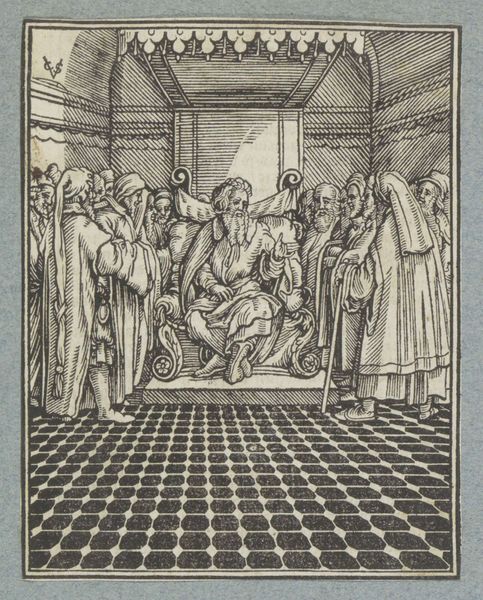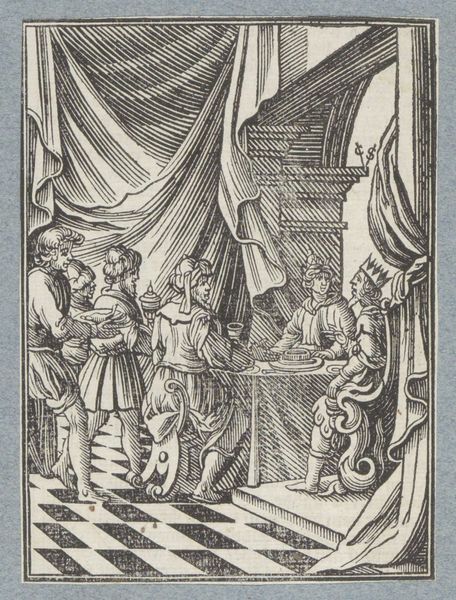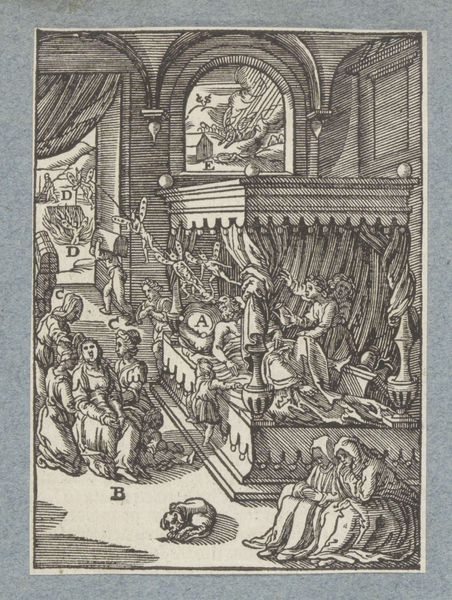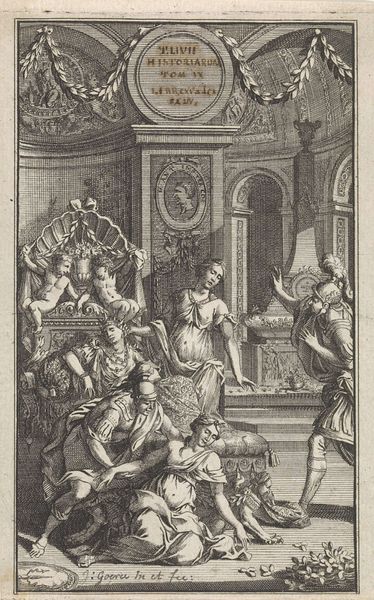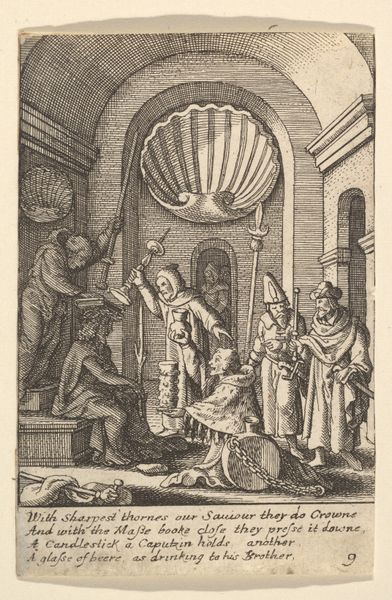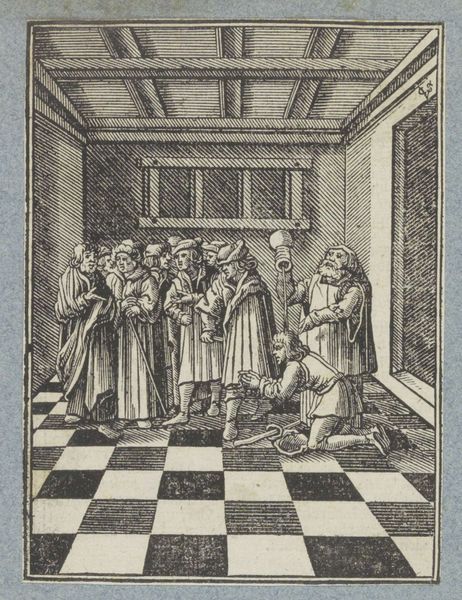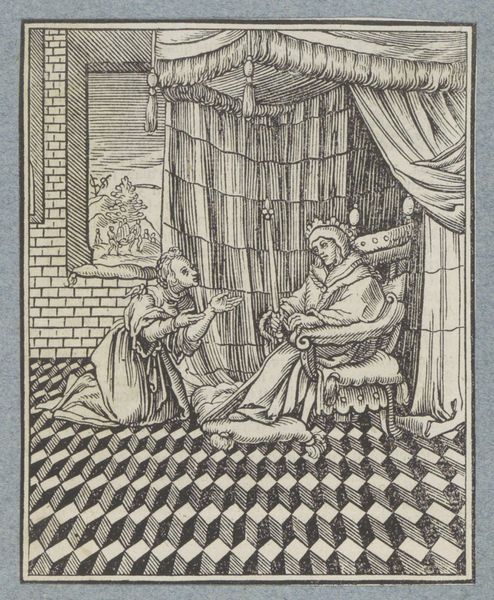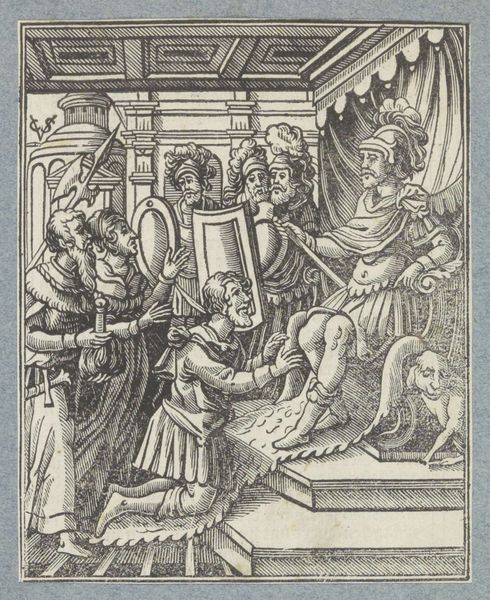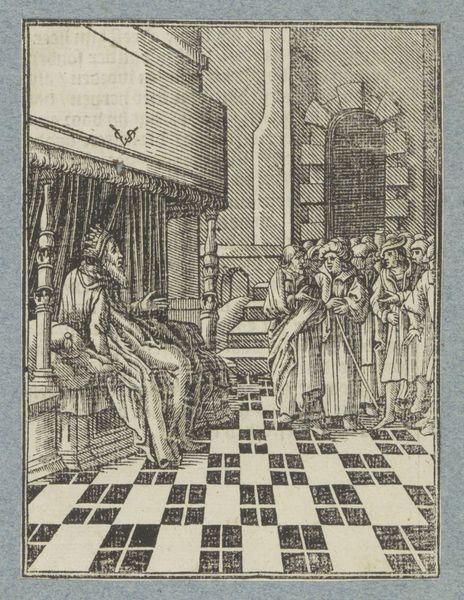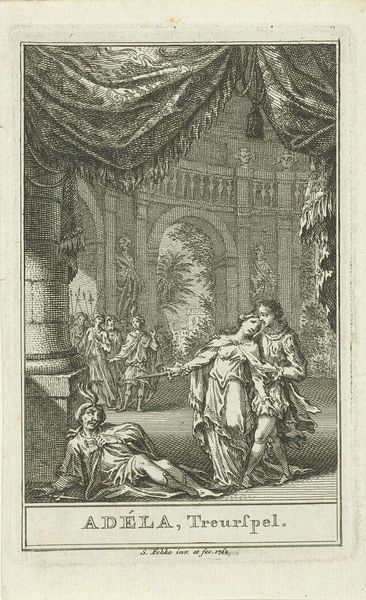
print, engraving
#
narrative-art
#
baroque
# print
#
figuration
#
history-painting
#
engraving
Dimensions: height 111 mm, width 87 mm
Copyright: Rijks Museum: Open Domain
Christoffel van Sichem II created this woodcut print, now held in the Rijksmuseum, depicting Ahasuerus extending his golden scepter to Esther. Here, the scepter acts as a potent symbol of royal power and mercy. The gesture, laden with both threat and grace, echoes across time. We see similar motifs in ancient Egyptian art, where the pharaoh’s staff signifies dominion, or in classical depictions of emperors extending olive branches as emblems of peace and control. This scepter, however, is not merely about power, but also about deliverance, a visual embodiment of hope in the face of potential destruction. Consider the checkerboard floor, a common masonic symbol representing the duality of light and dark. Note how its placement beneath the King and Queen reinforces the tenuous balance between life and death. Observe how the image's composition, with Esther kneeling in supplication, evokes a deep, subconscious understanding of power dynamics and the emotional weight of seeking favor from a higher authority. Such symbols never truly disappear; they resurface, evolve, and take on new meanings, reflecting our ever-changing, yet intrinsically connected, human experience.
Comments
No comments
Be the first to comment and join the conversation on the ultimate creative platform.
